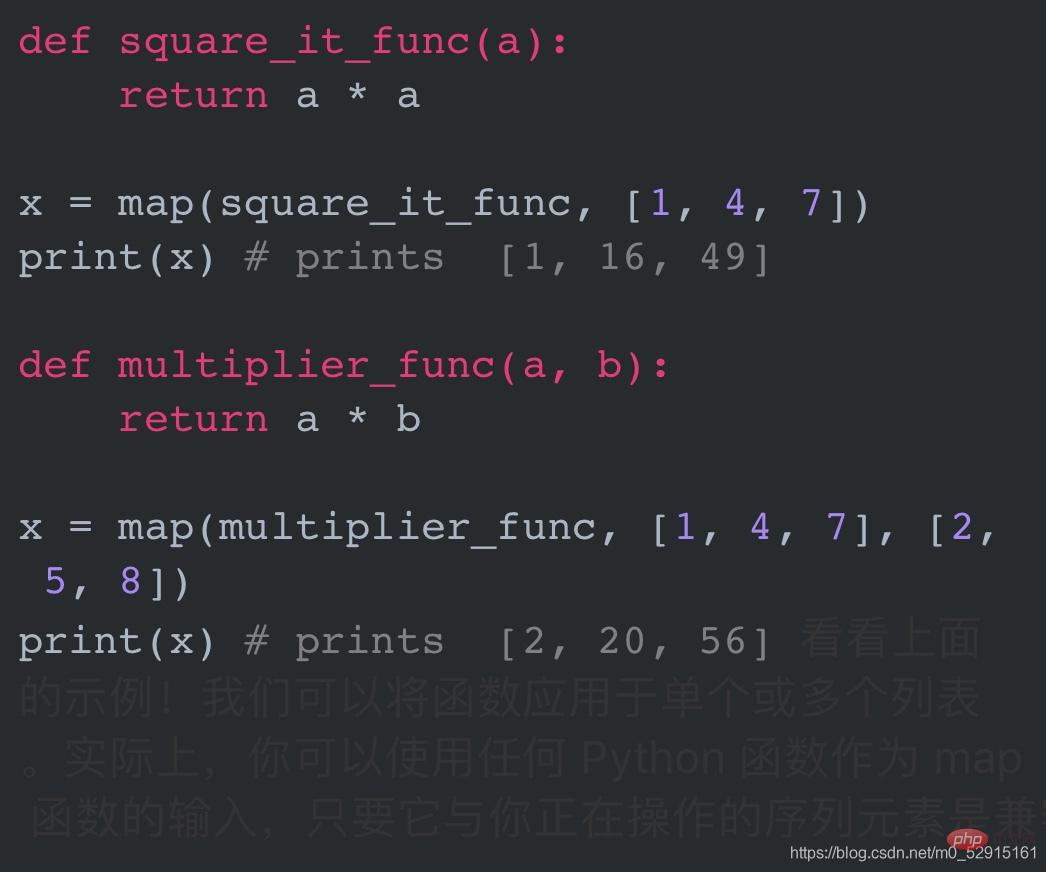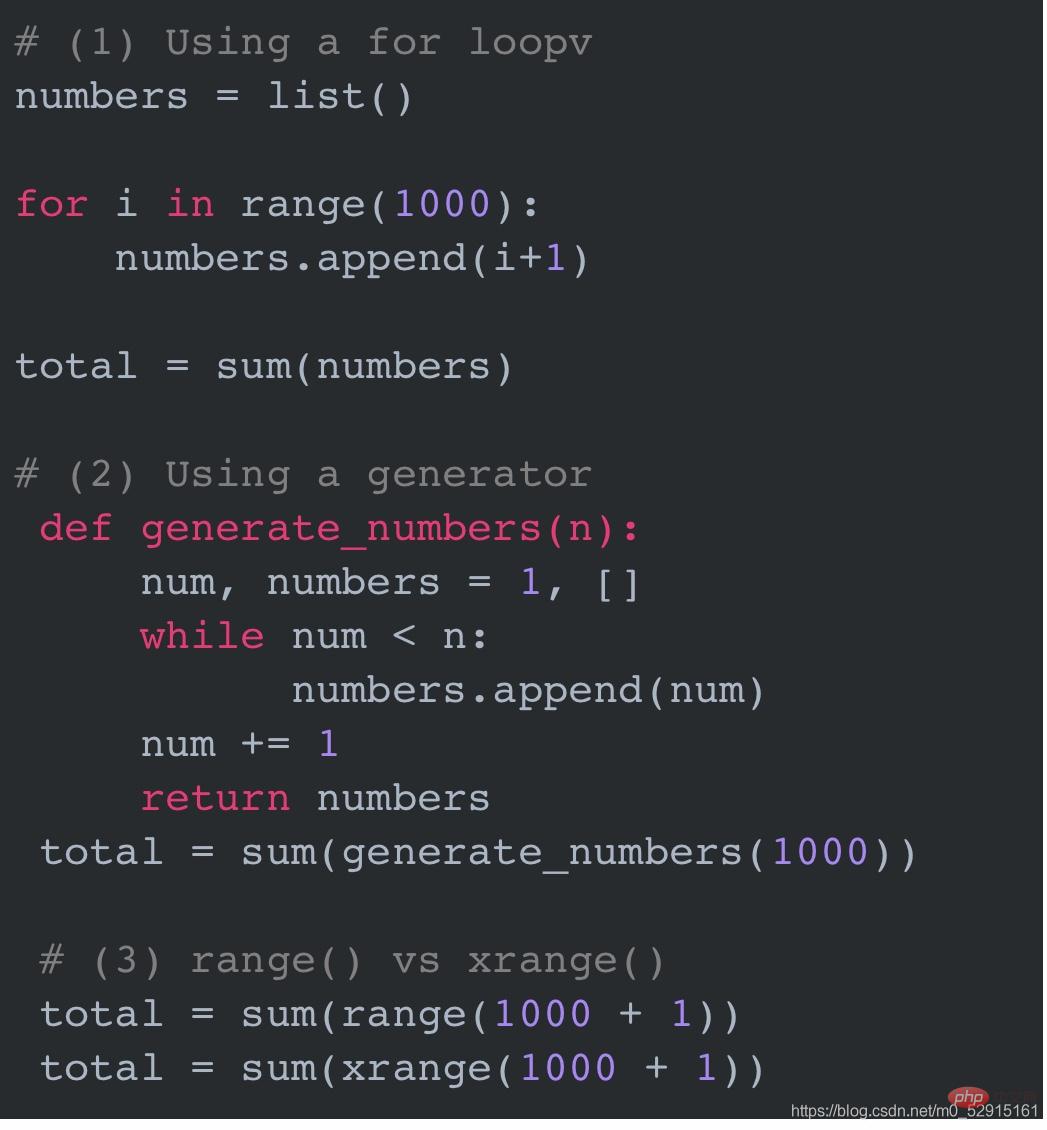

Free learning recommendations: python video tutorial

Advanced features of any programming language are usually discovered through extensive experience. Let's say you're working on a complex project and looking for an answer to a question on stackoverflow. Then you suddenly discover a very elegant solution that uses Python features you never knew existed!
This way of learning is so interesting: through exploration, you discover something by accident.
Here are 5 advanced features of Python and their usage.
Lambda function
The Lambda function is a relatively small anonymous function - anonymous means that it actually has no function name.
Python functions are usually defined using the def a_function_name() style, but for the lambda function, we don’t name it at all. This is because the function of a lambda function is to perform some simple expression or operation without fully defining the function.
The lambda function can take any number of parameters, but the expression can only have one. 
Look how easy it is! We performed some simple mathematical operations without defining the entire function. This is one of the many features of Python that make it a clean, simple programming language.
Map Function
Map() is a built-in Python function that can apply functions to elements in various data structures, such as lists or dictionaries. This is a very clean and readable way to perform this operation. 
Filter Function
#The filter built-in function is very similar to the map function in that it also applies functions to sequence structures (lists, tuples, dictionaries). The key difference between the two is that filter() will only return elements for which the applied function returns True.
See the following example for details
Not only do we evaluate each list element for True or False, the filter() function also ensures that only elements matching True are returned. It is very convenient to handle the two steps of checking expressions and building return lists.
Itertools module
Python’s Itertools module is a collection of tools for working with iterators. Iterators are a data type that can be used in for loop statements, including lists, tuples, and dictionaries.
Using the functions in the Itertools module allows you to perform many iterator operations that often require multi-line functions and complex list comprehensions. Regarding the magic of Itertools, please see the following example:

Generator function
The Generator function is an iterator-like function , that is, it can also be used in for loop statements. This greatly simplifies your code and saves a lot of memory compared to a simple for loop.
For example, we want to add all the numbers from 1 to 1000. The first part of the following code block shows you how to use a for loop to perform this calculation.
If the list is small, say 1000 rows, the memory required for calculation is okay. But if the list is huge, such as one billion floating point numbers, this will cause problems. With this kind of for loop, you will have a huge list in memory, but not everyone has unlimited RAM to store that many things. The range() function in Python does the same thing, it builds a list in memory.
The second part of the code shows using the Python generator function to sum a list of numbers. The generator function creates elements and stores them in memory only when necessary, i.e. one at a time. This means that if you were to create a billion floating point numbers, you could only store them in memory one at a time! The xrange() function in Python 2.x uses a generator to build a list.
The above example illustrates: If you want to generate a list for a large range, then you need to use the generator function. This approach is especially important if you have limited memory, such as with mobile devices or edge computing.
That is, if you want to iterate over a list multiple times, and it's small enough to fit in memory, it's better to use a for loop or the range function in Python 2.x. Because the generator function and xrange function will generate new list values every time you access them, the Python 2.x range function is a static list, and the integers are already placed in memory for quick access. 
For beginners who want to learn Python development, crawler technology, Python data analysis, artificial intelligence and other technologies more easily, here is also a set of learning materials from python introduction to practice, which are available for free. .
Related free learning recommendations: python tutorial(Video)
The above is the detailed content of 5 advanced uses to improve python efficiency. For more information, please follow other related articles on the PHP Chinese website!